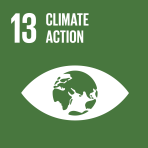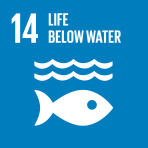Ocean-sourced carbonate production

- Author: Jacqueline Uku
- Main Title: Regional State of the Coast Report , pp 232-240
- Publication Date: March 2016
- DOI: https://doi.org/10.18356/2d6e97f7-en
- Language: English
Globally, atmospheric carbon dioxide (CO2) is exchanged with the surface ocean through a gas exchange mechanism which is driven by the partial pressure differences in carbon dioxide between the air and the sea (Ciais and others, 2013). Once in the ocean, the production of carbonates is a process that is governed by a series of chemical reactions as described by Doney and others (2009). Carbon dioxide dissolves in sea water (H2O) to form carbonic acid (H2CO3). This then dissociates to form bicarbonate ions (HCO3), hydrogen ions (H+) and carbonate ions (CO3). These reactions are reversible and are in an equilibrium state in seawater which has a pH of around 8.1 (Doney and others, 2009). At this pH, approximately 90 per cent of the inorganic carbon is in the form of bicarbonate, 9 per cent exists as carbonate and 1 per cent is in the form of dissolved carbon dioxide (Doney and others, 2009).
-
From This Site
/content/books/9789210601573s007-c005dcterms_title,dcterms_subject,pub_keyword-contentType:Journal -contentType:Contributor -contentType:Concept -contentType:Institution105


